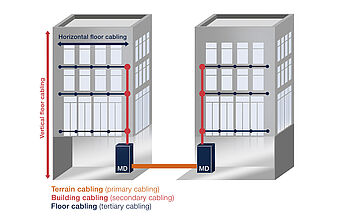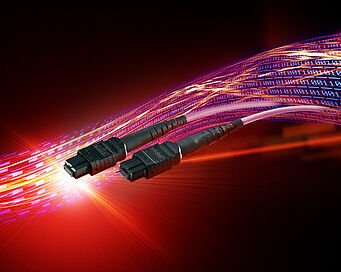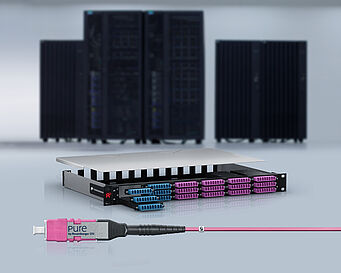Structured cabling (or universal building cabling) creates a future-proof basis for networks regardless of applications, because it enables simple installation of network components and can be flexibly expanded at any time. The structured cabling is based on a generally valid cabling structure that provides sufficient capacity reserves for future requirements. This provides a clear advantage over unstructured cabling, which is tied to specific application scenarios and often produces extremely high costs for technical conversions or extensions.
Aims of structured cabling
Structured cabling therefore aims to support all current and future communication systems and is neutral with regard to the transmission protocol and the end devices. The star-shaped structures create redundancies and increase reliability. The standardized components such as cables and connectors are installed according to a specified installation plan and (as a rule) support all the communication requirements that can be expected in the next 10 to 15 years.
Standards for structured cabling
Over 20 years ago, the first version of the "application-neutral communication cable system" was specified in EN 50173. Despite many initial optimization aspects, the standard has prevailed over the last few years. The usability and acceptance of its first version led to the gradual standardization of IT cabling in buildings without office workstations. Whether data centers or industrial buildings, there is a European or national cabling standard for everything.
Manufacturer-neutral cabling standards have existed since 1995, as globally valid standards (ISO/IEC 11801 plus others), as European standards (EN 50173) and as German standards (DIN/EN 50173), which largely represent a translation of EN 50173 with minor national changes. In addition to the central series of standards EN 50173, there are other important standards, such as EN 50346 in connection with cabling measurements, EN 50288 in connection with the specification of twisted-pair cables or IEC 60603 in connection with the specification of connector technology for twisted-pair.






![Singlemode or multimode glass fiber? [Translate to Italiano:]](/fileadmin/_processed_/0/d/csm_Singlemode-multimode-Vorschau-5zu4_a0ed42af88.jpg)